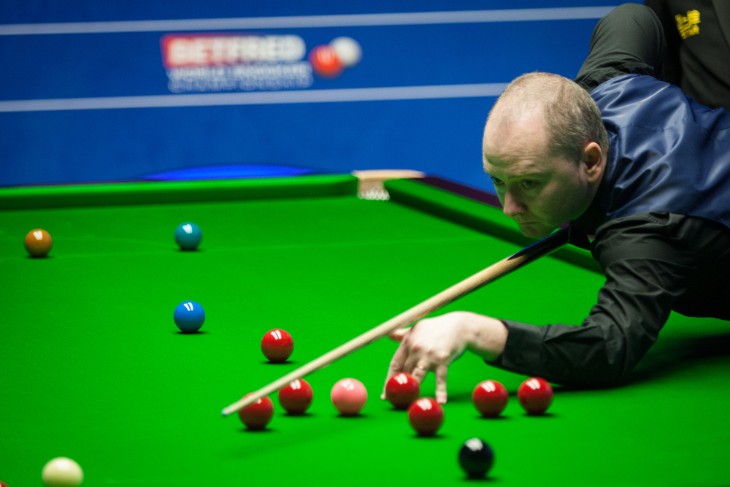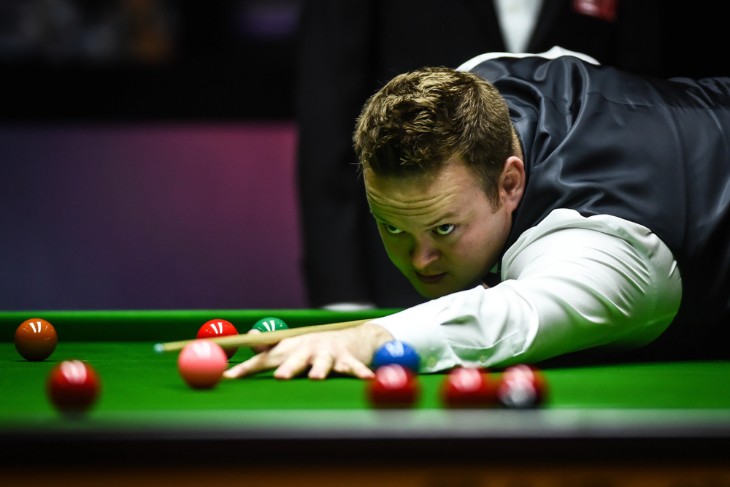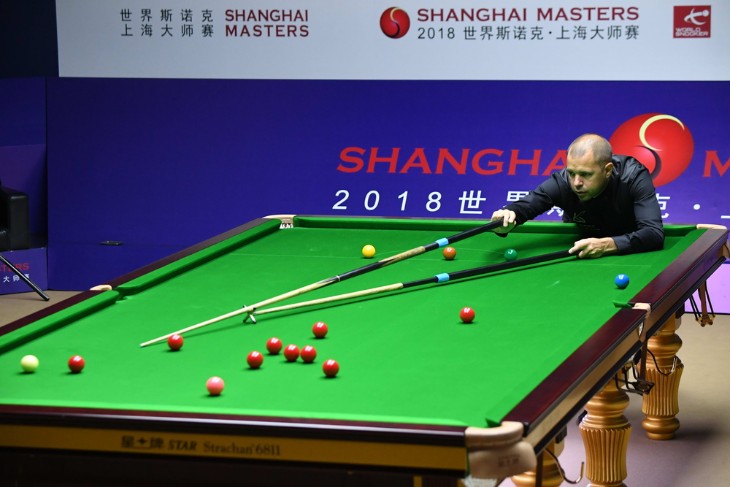Snooker being a game loved by many, is one that is difficult to disregard. It is an activity which infuses skill, strategy and flair. If you are new to snooker as a sport or just a fan only, then you need to know the basics. One very common question that people ask concerning this game is how many frames are in snooker? This article seeks to answer the question and more about the frame structure of snooker.
Introduction: The Fascinating World of Snooker
Snooker does not just involve hitting balls on a green table. It involves outsmarting your opponent, planning your moves, and executing them at just the right time. Every shot counts because every game you play will prove different from others. Be it played professionally during grand tournaments or casually among friends, snooker makes for an object of endless excitement and fun.
A frame is like a round in other sports when playing snooker. This starts with the first shot known as break-off and ends when all pockets are clean or if someone gives up on playing in that particular frame. The player who scores more points than any other player wins that frame. The total number of frames available in one match can be different depending on the rules given in tournaments or what players decide during friendly matches.
As such knowledge about how many frames make up a match is essential for maximizing enjoyment while participating in the game. This has an impact on strategic player decisions and gameplay execution as well. Some games are short but fast hence requiring quick thinking abilities coupled with razor-sharp skills while others take longer testing players' endurance over time and ability to stay focused.
From basic tallying methods to strategies used for various kinds of competitions this article gives important information that will educate you about some stuff related to the snooker world. Whether watching or holding a cue stick there are various things which are worth knowing about frames in a game of snooker that make it more interesting and full of fun.
The Basics of Snooker: How to Count Frames
Knowing about frames is where understanding snooker begins. A frame is one complete round of a game. It’s a game within a game. To begin with, there is the break-off, which is the first shot of a frame and ends when either all balls have been pocketed or one player concedes defeat in that frame. The winner in any given score wins.
So just how many frames are there in a match? This figure can vary from time to time depending on the rules governing the competition or as agreed upon by players if they are having an informal game. In professional matches, the number of frames has been fixed by organizers and cannot be changed. Some will take only a few frames for quick play while others may go up to several frames during long battles between players who have been friends forever.
Within each frame, both participants alternate turns attempting to pot their balls in an order decided upon at the start. Firstly, they must hit a red ball before going on to any other colour ball collection which might award them more points if such balls were potted too after reds alone finished being potted; thus leading back little back-and-forth activity since none except colours make single moves again until finishes itself.
Snooker frames are essential. A frame count determines the duration of a match and informs players how to strategize their game. In matches with many frames, lagging players can still catch up before the end. When there is a short match, every frame is vital for both competitors as it allows no margin for error. Understanding frames enhances appreciation of the game whether you are playing or watching.

Standard Frame Counts in Professional Tournaments
In professional snooker, the number of frames for each match is fixed. It varies from one event to another. The initial rounds usually have fewer frames while finals have more of them. Thus, this layout examines sportspeople’s abilities and his / her concentration over long periods.
For instance, during an event like the World Snooker Championship which is among the biggest tournaments, early rounds might be "best of 19 frames". What that implies is that finishing 10 frames initially guarantees winning the contest at hand. However, in most finals, 'best of 35' prevails. For instance, one must win eighteen (18) to become champion here. These marathon encounters truly test any player's skill level(s), planning methods plus mental strength.
The number of frames could be different in other tournaments; there are some with shorter matches such as "best nine" or "best eleven" frame events. They enable rapid play and require players to be alert right from the start since they last for a very short time compared to their counterparts lasting several hours: only take place once per game where errors are minimized and each frame counts at such times.
Fun is part of deciding the number of frames to play in casual. Going for a short game may be an option if one has little time or wants a quick challenge or just go for the long match and enjoy more playing/practising time. In casual, the main focus is on enjoying the game and getting better rather than winning it.
Understanding frame counts helps amateur players prepare their games to suit their needs. It also makes snooker more accessible and enjoyable to everyone irrespective of his/her expertise in playing it. The right number of frames can turn every snooker game into something memorable whether it's a quick after-work game or a longer weekend match.
The Importance of Frame Counts in Strategy
The number of frames in a snooker match is not just any number. That alone determines how players should approach this sport strategically. With many frames, even if they change tactics midway through, players have enough time to stop and think again. In a low-frame contest like this, every move counts from then on till the end; hence one must be sharp right from the beginning.
In long matches such as those found in professional tournaments, players have opportunities to observe their opponent's style and adapt accordingly when necessary during play. If at first things are not going well for someone he/she still gets some chances to catch up with others in front of him/her by taking risks or playing safe depending on how matters stand. Thus being flexible is key, especially within long matches.
A different strategy is used whenever there are shorter matches that characterize casual plays, unlike those that are longer matches. Poor decisions can't be made. Players tend to play carefully because there's little room for error. They concentrate on making points gradually instead of trying anything outlandish. In such games, starting strongly counts a lot since catching up might prove difficult.
Energy management comes second once you understand frame counts. Tiredness should not set in so early in the match or one should not lose concentration too quickly. In a short game, players can focus all their energy on just a few frames and do their best at once.
Whether it is in a professional tournament or a casual game, frame counts inform how the players make decisions. They choose when to take risks and when to play safe. For this reason, the knowledge of frame counts adds value to the game making it more interesting and enjoyable. This means that snooker involves being smart and planning well as opposed to having talent in using cue sticks.

Mental and Physical Endurance in Longer Matches
Playing longer matches also tests more than just a player's ability with his/her cue stick. It demands mental and physical preparation from the participants involved here. The emphasis is on maintaining attention for several hours at a stretch while keeping fit all through which explains why experts even use this term when talking about snooker championship games
Matches with many frames are characterized by a lot of time spent at the table as is the case with big tournaments. The players must not let their concentration slip at any point during the game. This means they have to think ahead while trying to plan their shots and observe how their opponents play. After all, when it’s tight or if the scores start to go against them, mental fortitude matters.
Physical stamina is also very important. Players spend long hours on their feet moving around the snooker table. Therefore, they need to possess a cunning eye for each shot and a firm hand. In this regard, all players need good physical condition so as not to lose accuracy even in the last frames of a protracted encounter.
In addition, these lengthy matches examine a player's ability to stand pressure and anxiety. Each shot becomes tenser as time goes on in this game. The player has to remain calm and make wise choices. This is where experience and practice come into play.
For fans, part of the excitement is watching how players handle these difficulties because it shows that they can do much to win. Consequently, one can see not only what skills a player possesses but also his/her strength as well as determination toward winning games from such views taken by fans who are interested in seeing someone committed throughout an entire match.
Therefore, longer snooker matches are more than just potting balls; rather, they involve being strong both mentally and physically at the same time. Such players often win big games because of this reason alone: they manage this dualism excellently among other things including significant skills that enable them to succeed in snookering environments; that is why it is considered an interesting sport for both watching and participating in.
The Thrill of Shorter Matches
Shorter snooker matches bring another kind of thrill altogether; these matches are fast-paced with lots of action coming along within a short period hence no single shot should be assumed irrelevant. For this reason, short matches are always thrilling to both players and spectators.
In these informal or amateur types of competitions unlike in non-informal ones, a player must have a quick eye from the word go. Unlike in longer games that provide time for recovery and comeback if one is trailing behind there are none in such a situation. Consequently, players need to shift their focus on getting points with their first shots as opposed to longer games where they try building up a large lead as early as possible and keeping it until the end.
The snappy pace of shorter matches also keeps people on their toes at all times, hence thinking quickly is necessary. Just like when playing long games where they take so much time planning every move, the shorter ones do not give room for such things. Instead, the gamers use what they know based on experience and make rapid choices concerning any move that lies ahead which may often turn out to be unexpectedly exciting moments during play.
To spectators, shorter matches will always remain attractive because of various reasons including unpredictability. This implies that sometimes one great shot can change everything within an instant while at other moments just one mistake can decide it all. Everyone is interested in seeing how this match develops further as well since a game-changer moment may occur at any given point.
Shorter games are also better suited for beginners or individuals who have limited time for playing. Therefore, newbies and those with less time get hands-on experience in various aspects of snooker without having to commit themselves to very prolonged playtime schedules thus making it more accessible and enjoyable for all participants.
All told, what makes shorter snooker matches so thrilling are the speed at which they proceed and the high stakes involved too; every frame matters! Whether you play or watch them is immaterial here since it offers a fun-filled way of enjoying snooker through shorter encounters
Bottom Line
Finally, understanding frames adds to the enjoyment of snooker whether you’re playing or watching it because knowing about frame counts helps you understand the game better since you may see why they make some choices and appreciate such skill and strategy involved.
Frames in snooker are not mere numbers; they form part of what makes it special among other games played on a table with pockets put around its perimeter. In every snooker match, there are several things upon which it relies especially strategy together with skills then followed by excitement after which fun kicks behind all these – that is exactly where frames come into play. Snooker is thus an intriguing game both for fans as well as players alike.




.webp)


 (1).webp)




















